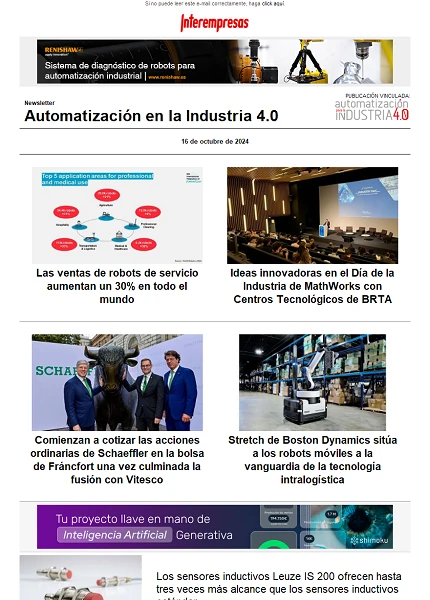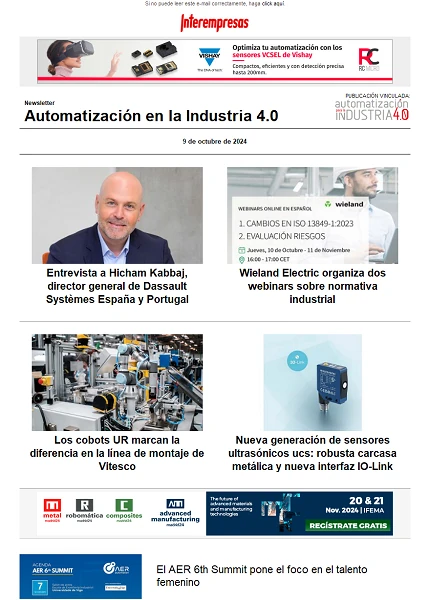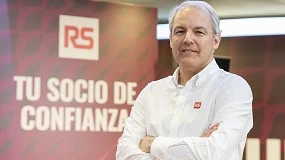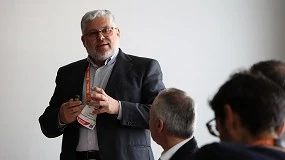Situation of the electric injection machines
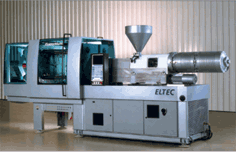
The House Braun in Kronberg (Germany), one of the first international manufacturers of small electrical appliances, has opted for electric injection machines. At its factory in Marktheidenfeld, which has 1600 employees and is the largest center of production of this multinational company, currently in use over 30 electric locomotives of the brand Ferromatik Milacron, Malterdingen (Germany), pioneer in the design and construction of electric injection machines company. Among the advantages of such equipment, the Braun House highlights high precision, low costs of maintenance and repairs compared to hydraulic models, and considerable energy savings. And, Furthermore, - commends Manfred Drach, director of manufacturing of Braun - the electric version "elektra" type machines are extremely quiet. What does nothing strange, given that the noise they produce conventional injection machines with its cylinders and hydraulic circuits has been removed. This, it is a noise level of 70 dB (A) approximately 20 decibels less than with hydraulic machines.
The "electric companies" have to prove what they are worth
Of course that the factory of the Braun House Marktheidenfeld is the exception of the rule, at least in Germany and in neighbouring countries. It is very likely that there is not any other plant that uses such a large number of electric injection machines in that region. Continues on foot what said Alfred Schiffer, technical director of Dr. Boy GmbH, manufacturer of injection machines belonging to the range of low closing forces, in an article published in the newspaper "K" of the Giesel Isernhagen editorial on the occasion of the fair Fakuma 2000: "For the vast majority of parts moulded by injection are produced today, hydraulic machines are the best solution". And Hans Wobbe, then Manager of the Division of injection machines of the company Krauss-Maffei in Munich, remachó the above saying: "long term repeatability, typical of hydraulic machines, is well known;" "while the electrical drives have yet to demonstrate this."
A so-called study of Delphi around the "future technologies of industry of the plastic", developed in the mid-nineties of last century, predicted electric versions between injection machines went to 28 percent in the year 2000. The final commentary prepared by the grouping of builders of machinery rubber and plastic of the German Association VDMA, referring to the study indicated that the 72 by hundred remaining break in 34 percent of hydraulic machines and 38 percent hybrid. The success of this prognosis and such quantification - at least in the European region - there is no clear at the moment. After more than a decade since the submission of the first electric injection units, its world share is estimated that it will be the mark of 5 percent around as much.
The biggest obstacle that prevents that such equipment have wide acceptance in the European market is its cost - believes Johannes Wortberg, Professor of Industrial design and equipment of plastic from the University of Duisburg-. The price of an electrical injection machine, compared to the other hydraulics, is between 30 and 40 percent higher. However, there are some important arguments in favour of electric machines. The Wortberg engineer cited points such as energy saving, better repeatability, less influenced by environmental conditions, and ecological aspects, such as the low emission of noise and the abolition of the hydraulic oil.
While not much reduce the discrepancy between the costs of acquisition of both types of machines, it unchanged significantly - esteem Wortberg-the market share of the electric machines in Europe. On the other hand, the situation is completely different in Asia, where the proportion of electric machines is already quite high. Also in North America has the tendency to use electric machines. The reasons are derived from very different circumstances. For example, in Japan, the tax burden is progressive in function of the amount of oil and the United States inclination to apply new technologies and, therefore, not yet accredited tends to be higher than in the European processing companies.
This is also reflected in statistics production of specialized suppliers. Sumitomo with production capacity of 3,000 machines injection per year is one of the leading Japanese manufacturers. But even more interesting is the fact that about 65 per cent of this figure of production, i.e. slightly less than 2,000 units, corresponding to electric machines. So that Sumitomo should probably be the world's largest builder of electric injection machines. This company covers the range of pressures of closure of 180 to 3,500 kN, which is at the same time currently considered as the limit of the high segment. More powerful models not be profitable, according to the experience of the Japanese, due to the technical complexity and the performance ratio. But, typically, there are exceptions confirming the rule: the greater machine provided so far by Ferromatik Milacron North America develops a power of closure of 8,700 kN. And also American manufacturer UBE Machinery of Ann Arbor offers electric injection machines even of more than 10,000 kN.
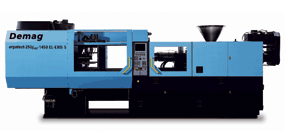
Hydraulic machines to correct its weaknesses
The same view the engineer Wortberg, who apart from exercise of Professor is director of the Institute of technology and equipment of plastic (IK2) Essen. Other adjustable pumps with pressure regulation or a special regulation of pressure and flow rate system are used in an article published in the German magazine "kunststoffe" quote, by way of example that currently in the hydraulic machines, in addition to constant flow pumps,having been achieved thereby considerably improve performance and, therefore, the consumption of energy. Another advancement has been so reported the use of servoválvulas, with which the response is faster. That means specifically that improves the quality of the regulation and, consequently, the accuracy in positioning of hydraulic axes.
Symbiosis between hydraulic and electric systems
Another possibility of modification of the traditional hydraulic drive is to decentralize the hydraulic system. In this regard, an interesting example of this design is the model "Elexis-E", a hybrid team of Demag Ergotech GmbH of Schwaig (Germany). A single servomotor produces such models both the movement of injection and the turning of the spindle. A central energy accumulator is the basis for the process of injection servorregulado and very dynamic and independent secondary movements, as for example the activation of the males of the kernel. In electric machines, this is possible only by giving them an additional hydraulic unit.
An example of which are also offered drives servoeléctricos to attach them later screw without end are the machines of injection of modular hydraulic type in the "HM" series of Battenfeld Meinerzhagen GmbH (Germany). As alternative to the normal hydraulic model, this manufacturer offers a drive servoeléctrico of plasticizing movement in the specification of the machine. "HM" series models carry an identical connection for hydraulic motor and servo motor. Thus, it is possible to change the actuation of machines, later adding a three-phase servo motor, to convert the standard in other hybrid and vice versa.
Are on the verge of landing the electric machines?
For example, the Austrian company Engel of Schwertberg announces a new series of electric injection machines under the title of "moción". From next October, the company will offer machines with electromechanical drive series and 55, 100 to 150 kN power of closure. In this regard, during the press conference held in May next past knew that this model of Engel with unit locking without guides carries a powerful central bent lever which opens and closes the mold accurately. Directly driven by a servo motor with crankshaft, this procedure allows very fast movements, so short the unproductive phases. The drying time does not matter more than 1.5 seconds.
The company Netstal Maschinen AG of Näfels (Switzerland) was limited to present the study of a machine of electrical injection of 1200 kN clamping force in the 2001 K. Now well such machines did not begin to manufacture in series until 2003. But, as compensation, the Swiss company exhibited the electrical injection system "e-jet", intended for the manufacture of optical discs as Visual data media. This innovation of very futuristic design will be offered in parallel to the line of hydraulic production "discjet" and, as well as this, is a solution tailored for the production of all current and future formats of storage devices. The new model of machine is suitable for working with two cavities and a single cavity molds. According to Netstal, stands out among other things for its high-speed movements, good repeatability and low noise level.
For the first time the company Krauss-Maffei Kunststofftechnik GmbH in Munich (Germany) attended this fair with a range of electric injection machines. These machines introduced in the market under the brand name "eltec" develop 500, 800, 1100 and 1200 kN clamping force, respectively, and are offered with the accredited system of closure of two dishes. But "eltec" is simply a "semieléctrica" version, as about two liters of oil (or other fluid) is needed to develop the clamping force. According to the manufacturer, armored drive system makes the machine suitable for applications in clean rooms.
In Düsseldorf were more products related to electric injection equipment. American manufacturers, the Italians and especially the Japanese presented new models and improved designs. If the electrical machines are unable to land immediately in the "old world", at least and as it is conjecture in view of the situation, shall pass to other nearby circuits of waiting.

